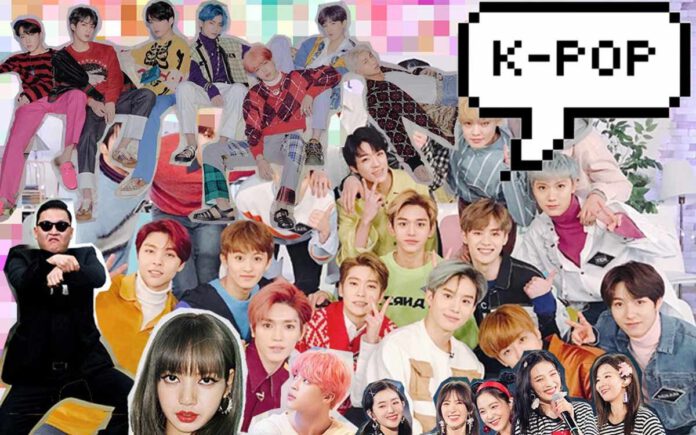
An interview with Hong Seok-kyeong, Director of the Center for Hallyu Studies and Professor of Communication at Seoul National University. Hong Seok-kyeong, who taught at the University of Bordeaux in France for many years before joining Seoul National University, has conducted in-depth research and studies on Korean pop culture, including Korean dramas and K-pop in France.
Does today’s K-pop-dominated Korean pop culture continue or break from the earlier Korean drama-led wave?
The Korean Wave is a continuous phenomenon shaped by evolving media. I identify three stages: its East Asian spread via radio, its digital globalization, and the platform era starting in 2016, driven by China’s market restrictions and global platforms like Netflix.
Rather than disrupting earlier media environments, this phase builds on them, reshaping content circulation while maintaining continuity. Each stage reflects adaptation, not a cultural break.
What is the biggest difference between K-pop in Europe, especially France, and the U.S.?
The 2011 SM concert in Paris was K-pop’s first major international showcase, even preceding similar events in the U.S. Despite initial uncertainty, tickets for the 6,000-seat venue sold out instantly at high prices, proving K-pop’s global appeal and sparking interest in Korean culture beyond music.
France’s cultural pluralism, distinct from Anglo-American multiculturalism, supports diverse cultural imports despite national identity concerns. This openness, along with France’s strong anime and manga fan base—the largest outside Japan—helped Korean dramas gain traction. Many early K-drama fans came from anime communities, reflecting the broader interconnectedness of East Asian pop culture in Europe.
While race and gender, especially the latter, dominate K-pop studies in the English-speaking world, class remains underexplored but is more significant in Europe. How does class influence K-pop’s spread in Europe?”
K-pop fandom reflects class dynamics, though often subtly. Full engagement—buying merchandise, attending events, and participating in fan activities—requires financial means, making it largely a middle- and upper-middle-class phenomenon.
In Europe, especially France, parents often support their children’s fandom, seeing it as culturally enriching. Fans not only enjoy music but also learn Korean and explore broader cultural aspects. This demographic’s stability reinforces K-pop’s image as a middle-class space, free from associations with substance abuse or violence.
Class thus shapes K-pop’s accessibility and fan practices, highlighting the economic and cultural capital needed for deep engagement.
With France’s strong affinity for Japanese culture, especially anime, has this helped spread K-pop in France?
Japonisme in France emerged in the late 19th and early 20th centuries, while Chinese fever dates back to the 17th and 18th centuries. In contrast, the Korean Wave is a grassroots movement that began with marginalized youth, not intellectual elites, making it distinct from earlier cultural trends like Japonisme.
This bottom-up nature sets the Korean Wave apart, as it challenges traditional aesthetic paradigms. Many intellectuals still find it ‘uncool,’ highlighting the divide between popular and elite tastes.
The Korean Wave’s people-driven nature gives it transformative power, even influencing politics in some countries. Unlike Japan or China, its democratic appeal fosters cultural shifts and social change, making it a globally significant phenomenon.
Korean journalists note that K-pop fans in Europe are mostly white, unlike in the US. Why is there this difference?
In France, K-pop attracts diverse multicultural teens, but their visibility is limited by fewer resources compared to middle-class fans. As K-pop becomes more mainstream, especially with groups like BTS, the label “K-pop fan” has gained positive connotations. While Korean dance events emerge in urban areas, teens today prefer online spaces for self-expression.
In the U.S., K-pop intersects more with race and gender issues, with Black and Latino teens using it to express their identities. In contrast, European K-pop culture is shaped by class distinctions, with middle-class teens dominating the scene, while race and gender play less of a role. This shows how K-pop’s reception differs across regions based on social and cultural factors.
Do you think the “soft masculinity” in K-pop reflects both Koreanness and Asianness, aligning with traditional East Asian cultural ideals like Confucianism?
The relationship between traditional Confucian masculinity and modern soft masculinity in K-pop is complex. Confucian principles, such as caring for others and prioritizing communal well-being, influence the portrayal of masculinity in K-pop. However, K-pop idols, especially male ones, embody a modern form of masculinity that emphasizes physical discipline and self-management. Unlike Confucianism’s focus on moral duty and restraint, K-pop emphasizes bodily discipline and performance-driven excellence, reflecting a shift in cultural and gender norms. While soft masculinity in K-pop may draw on historical values, it aligns more with contemporary, postmodern ideals.
Do you think the rise of transmedia in Korean entertainment, as discussed with Bang Si-hyuk in 2015, reflects the influence of academic research on the industry, and will Korean producers pay more attention to academic discussions on K-pop?
The K-pop industry’s rapid exchange of ideas and practices, driven by close relationships among professionals, fosters quick innovation and adaptation. Transmedia storytelling, though not formally recognized at first, was implemented long before the term gained traction, highlighting the industry’s practical understanding of audience engagement. The interconnectedness of the industry, where small-scale key players share innovations, accelerates the diffusion of ideas. Examples like the zombie dancers in *The Busan Walk* illustrate the blending of creative sectors. This collaborative environment drives K-pop’s evolution, demonstrating how the genre’s success is tied to its unique, agile production ecosystem.
Source: the paper, Medium



